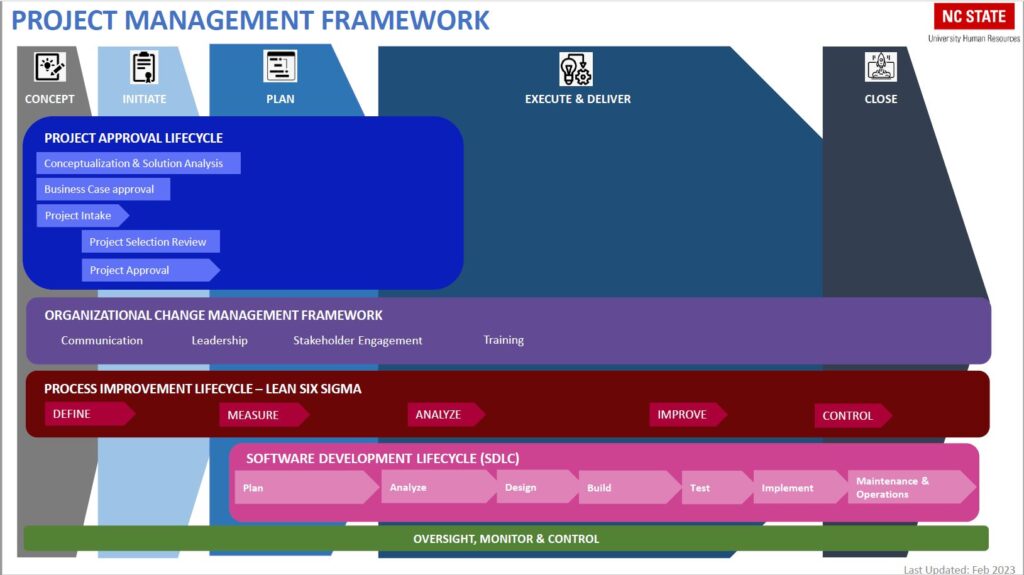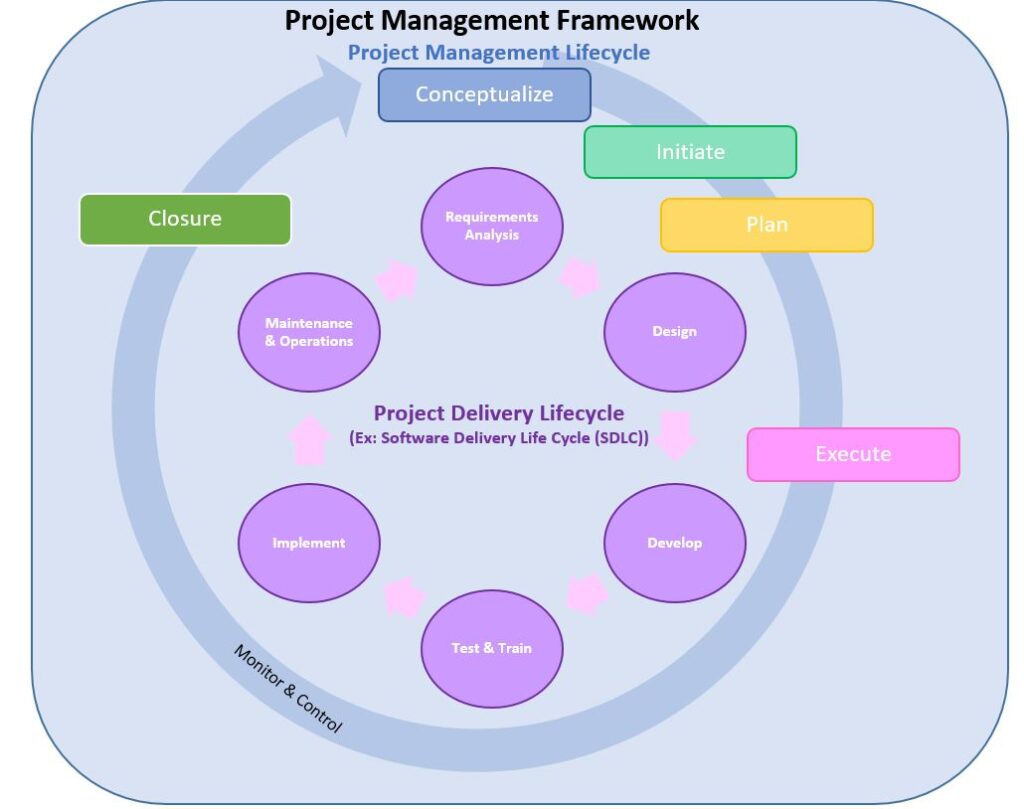Project Management Framework
Project Management Framework
The HR-PMO employs the Project Management Framework (HR-PMF) as a systematic approach to completing all tasks for a project. The HR-PMF is a practical and useful guide to lead project teams through the Project Management Lifecycle (PMLC) to achieve expected outcomes and thereby project success.

Who can use the Project Management Framework?
The framework is a practical and useful guide for Project Managers and project team practitioners who are responsible for directly performing or overseeing project management processes and activities.
It also contains useful information for project sponsors, project participants, and stakeholders regarding the effective and efficient management of projects.
The guidance and advice contained in the framework emphasizes the importance of people skills, good judgment, and effective communications in the successful delivery of projects. These are critically important and relevant to all project Stakeholders.
What is included in the Project Management Framework?
The Project Management Framework includes:
- All major project processes and activities from initial project definition to project closing.
- These are meant to equip the Project Manager with necessary tools to consider the project needs and how its organization can be structured to deliver the intended result.
- Models for the management tools and plans used to document and manage the project.
- Project management practitioners are encouraged to leverage the tools and templates by modifying them for the needs of their respective projects.
- Each plan describes some aspect of how the project team conducts its work. This includes how to control the operation of the project team, assess project progress, and evaluate the quality of products created by the project.
What are the benefits of using the Project Management Framework?
- Scalable: The framework can be scaled to projects of any size, type, and complexity. Varying levels of formality can be applied to serve projects of different sizes.
- Flexible: Project Managers have the discretion in deciding which activities are most practical to the project and may employ components that best suit their needs.
- Reliable: The framework provides foundational guidance that is compliant with project management standards and policies (as defined by the Project Management Institute (PMI)) and can be adapted to the context of all HR projects at NC State. It provides resources, tools, templates, and reportable project metrics based on industry best practices and lessons learned.
- Adaptable: The framework allows for changes based on client needs and follows a cycle of continuous improvement.
How does the project management framework integrate the various lifecycles?
To successfully deliver a change, the Project Management Framework applies the Project Management Lifecycle to the product or service delivery lifecycle.
In the diagram below:
- The PM Lifecycle is demonstrated by the outer ring with the directional arrow moving through the 5 phases (Conceptualization, Initiation, Planning, Execution and Closure).
- The inner circle depicts the product or service delivery lifecycles with the flow moving between 6 phases (Requirements analysis, Design, Development, Testing & Training, Implementation and Post-Production Maintenance & Operations). This lifecycle displays a continuous flow between the 6 phases as upgrades and improvements will follow the same phases after implementation.
- The IT product delivery lifecycle is the Systems Development Lifecycle (SDLC). The SDLC may be a series of smaller cycles/iterations or sprints for an iterative or agile development delivery approach.
